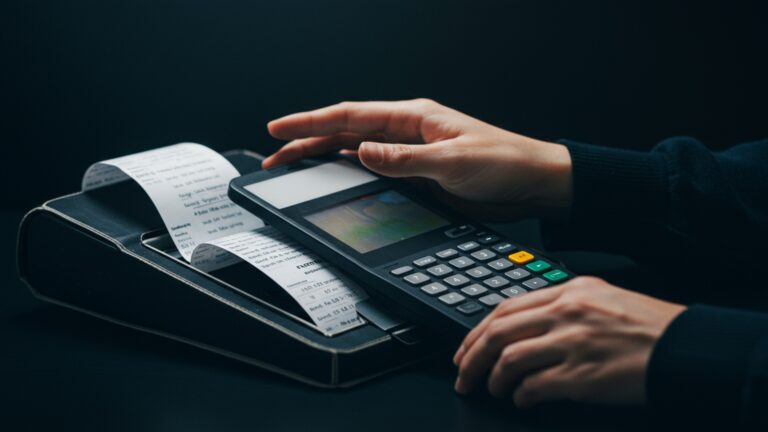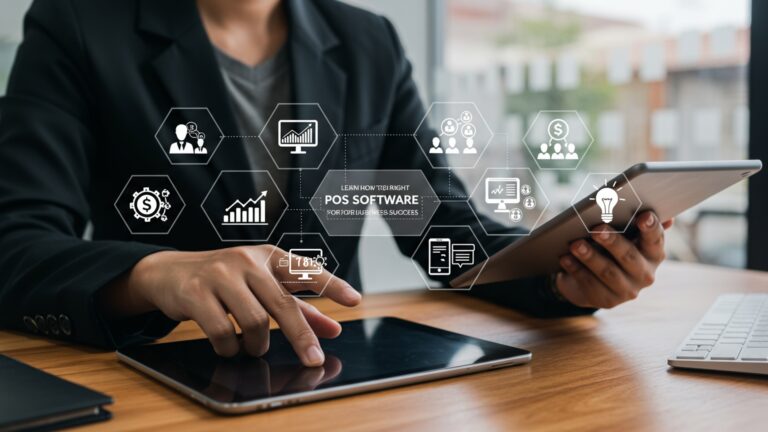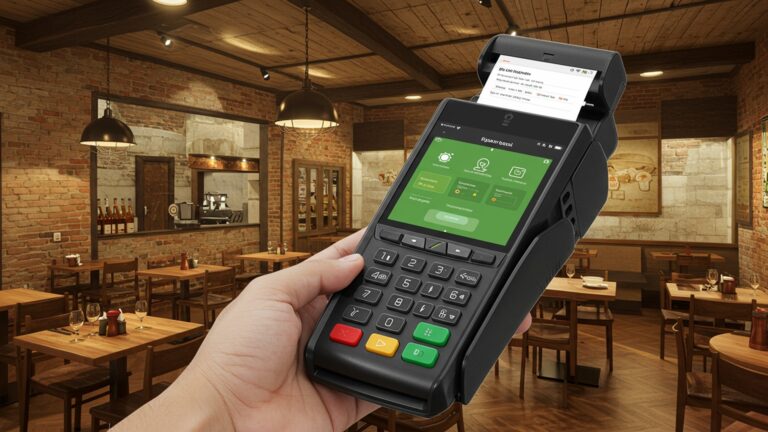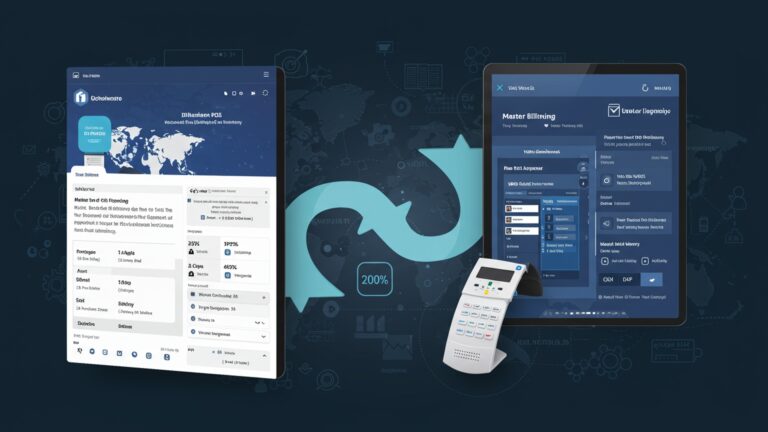How to Set Up Android POS Software for Your Small Business Easily
Transforming your small business operations no longer demands expensive, proprietary hardware. Today’s dynamic retail and service landscape thrives on agility, making robust android pos software a game-changer. Imagine a bustling coffee shop effortlessly processing contactless payments via a tablet, or a pop-up boutique managing real-time inventory updates directly from their smartphone. Recent advancements in cloud-based Android POS solutions provide unparalleled flexibility, allowing seamless integration with online stores and loyalty programs, all while drastically reducing setup costs. This shift empowers entrepreneurs to deploy scalable systems quickly, moving beyond traditional bulky terminals to embrace a sleek, mobile-first approach that keeps pace with modern consumer expectations.
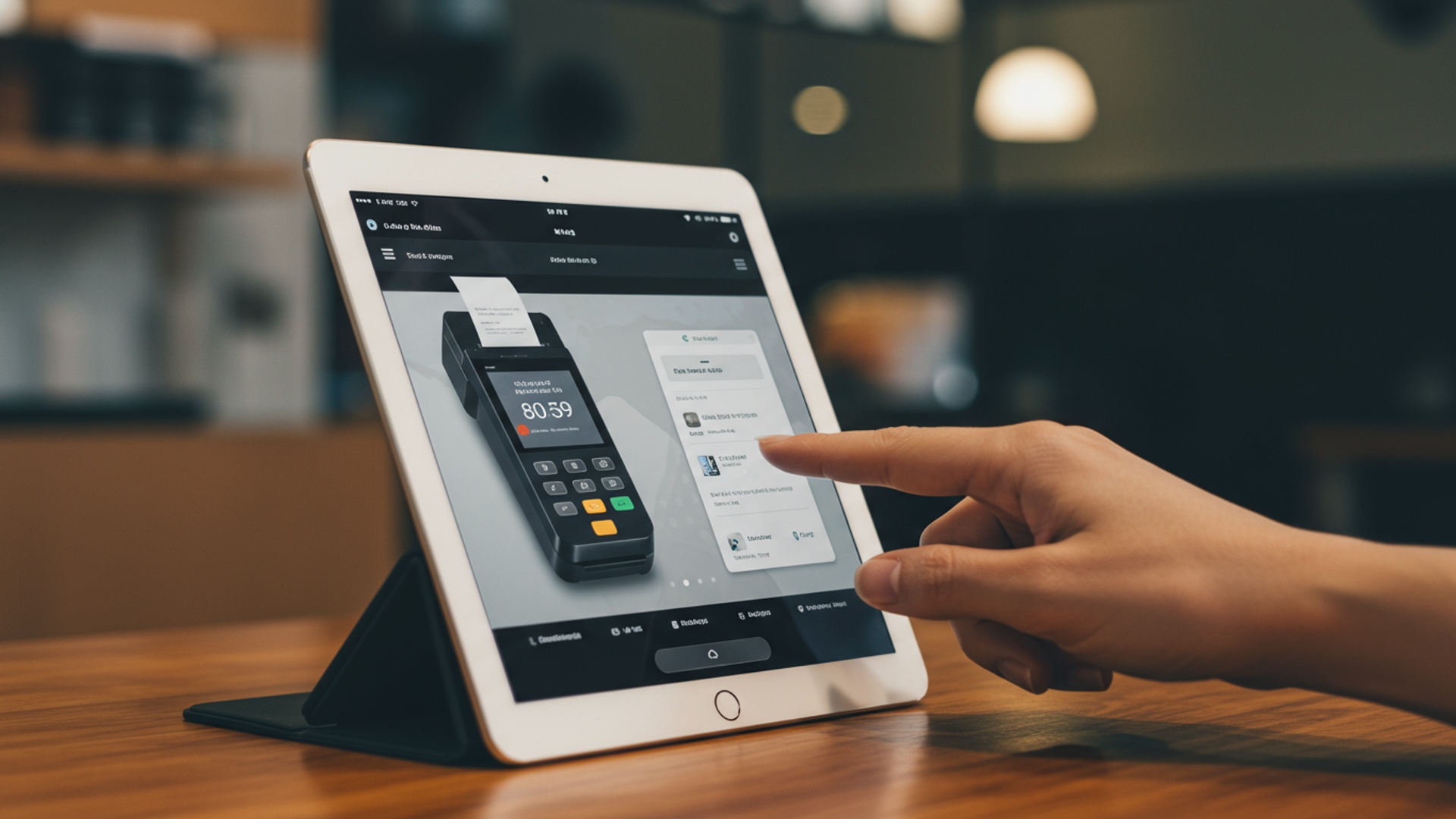
Understanding Android POS Software
In today’s fast-paced business environment, Point of Sale (POS) systems are no longer just cash registers; they are comprehensive solutions that drive efficiency, enhance customer experience. provide critical insights. An Android POS system leverages the versatility and cost-effectiveness of the Android operating system to deliver these capabilities. At its core, a POS system is where your customer makes a payment for products or services in your store. When we talk about android pos software, we’re referring to the application that runs on an Android-powered device (like a tablet or smartphone) to facilitate these transactions and manage various business operations.
The ubiquity of Android devices makes this a particularly attractive option for small businesses. Android offers an open-source platform, leading to a vast ecosystem of affordable hardware and a diverse range of software solutions. This flexibility means businesses can often repurpose existing Android devices or invest in purpose-built, cost-effective hardware, significantly reducing the initial setup cost compared to proprietary systems.
Key features typically found in robust android pos software include:
- Sales and Transaction Processing
- Inventory Management
- Customer Management (CRM)
- Reporting and Analytics
- Employee Management
- Offline Mode
Handling cash, card. digital payments, processing returns, exchanges. discounts.
Tracking stock levels, managing product variations. receiving alerts for low stock.
Building customer profiles, tracking purchase history. managing loyalty programs.
Generating sales reports, understanding peak hours. identifying best-selling products.
Setting up user accounts, managing permissions. tracking employee performance.
Ensuring transactions can continue even without internet connectivity, syncing data once online.
Essential Hardware Components for Your Android POS Setup
While the android pos software is the brain, a suite of compatible hardware components forms the body of your POS system. Selecting the right hardware is crucial for smooth operations and can significantly impact the user experience for both your staff and customers. Here’s a breakdown of the essential components:
- Android Tablet or Smartphone
- Recommendation
- Real-World Application
- Receipt Printer
- Thermal Printers
- Impact (Dot Matrix) Printers
- Connectivity
- Cash Drawer
- Integrated
- Standalone
- Barcode Scanner
- Handheld Scanners
- Presentation Scanners
- 2D Imagers
- Tip
- Card Reader (Payment Terminal)
- EMV (Chip Cards)
- NFC (Tap-to-Pay)
- Magstripe
- Types
- Network Connectivity
- Wi-Fi
- Ethernet
- Mobile Data (4G/5G)
This is the central hub for your android pos software.
Opt for a device with a reliable processor, sufficient RAM (at least 4GB for smooth multitasking). ample storage. A screen size of 8-10 inches is often ideal for tablets, offering a good balance between portability and usability. Consider ruggedized tablets for environments prone to spills or drops.
A coffee shop might use a Samsung Galaxy Tab A8 for its main counter, while a food truck owner might prefer a durable smartphone like a Google Pixel for its mobility.
Essential for providing customers with proof of purchase.
Most common, fast, quiet. use heat-sensitive paper (no ink needed). Ideal for most retail and restaurant environments.
Slower, louder, use ink ribbons. can print carbon copies (e. g. , for kitchen orders).
Look for Bluetooth (for mobile setups), USB (for direct tablet connection), or Ethernet (for network-shared printing).
Securely stores cash and coins.
Many modern cash drawers can be triggered to open automatically by the POS software when a cash transaction is processed, connecting via a printer or directly to the tablet.
Manual push-to-open drawers are also an option for simpler setups.
Speeds up checkout and improves inventory accuracy.
Ideal for scanning larger items or items on shelves. Often connect via Bluetooth or USB.
Sit on the counter, allowing staff to pass items over them for quick scanning.
Can read both traditional 1D barcodes and 2D barcodes (like QR codes), which are becoming more common.
Many android pos software solutions can also use the tablet’s built-in camera as a basic barcode scanner, though dedicated scanners are faster and more reliable for high-volume environments.
For processing credit and debit card payments.
Essential for security and liability shift compliance.
Supports contactless payments like Apple Pay, Google Pay.
For older cards, though becoming less common.
Mobile card readers (e. g. , Square Reader, Zettle) are excellent for portability and often connect via Bluetooth. Dedicated countertop terminals offer robust features and direct integration with your android pos software.
Reliable internet access is paramount for cloud-based android pos software.
Most common for in-store setups. Ensure strong, stable coverage.
More reliable and faster than Wi-Fi, often used for critical components like printers if supported via an adapter.
Crucial for mobile businesses, pop-up shops, or as a backup for Wi-Fi.
Here’s a quick comparison of popular connectivity options for peripherals:
| Connectivity Type | Pros | Cons | Best For |
|---|---|---|---|
| Bluetooth | Wireless, portable, easy pairing. | Limited range, potential interference, slower than wired. | Mobile setups, small stores, single-device operations. |
| USB | Reliable, fast, direct connection. | Requires physical connection, fewer ports on tablets. | Countertop setups, devices needing consistent power/data. |
| Ethernet (LAN) | Highly reliable, fast, network-shared. | Requires cabling, an adapter for most Android devices. | Multi-station setups, kitchen printers, high-volume environments. |
Choosing the Right Android POS Software for Your Business
The market for android pos software is vibrant and diverse, offering solutions tailored to various business needs. Making the right choice involves carefully evaluating several factors to ensure the software aligns perfectly with your operational requirements and growth aspirations.
- Industry-Specific Features
- Retail
- Restaurants/Cafes
- Service Businesses
- Real-World Example
- Pricing Models
- Subscription-Based
- One-Time Purchase
- Transaction Fees
- Scalability
- Consider if it supports multiple locations, additional users. expanded product catalogs without significant re-investment or migration.
- User-Friendliness
- Test the software’s ease of navigation, speed of transaction processing. clarity of reports. Look for a clean, modern design.
- Integrations
- Accounting Software
- E-commerce Platforms
- CRM & Marketing Tools
- Employee Scheduling
- Customer Support
- Check for 24/7 support, phone/email/chat options. comprehensive knowledge bases.
Look for robust inventory management (SKUs, variants, bundles), customer loyalty programs. integrated e-commerce capabilities.
Prioritize features like table management, kitchen display system (KDS) integration, order modifiers, split checks. delivery platform integrations.
Appointment scheduling, employee time tracking, client management. invoicing features are key.
A small boutique might need strong inventory tracking with multiple sizes and colors, while a local bistro would benefit more from a system that can send orders directly to the kitchen and manage tables efficiently.
Most common, offering monthly or annual payments. Often includes ongoing support and updates. Allows for scalability.
Less common for cloud-based android pos software. some on-premise solutions may offer this. Be wary of hidden costs for updates or support.
Some payment processors integrate with POS software and charge per transaction. interpret the combined cost of software and payment processing.
Can the software grow with your business?
An intuitive interface reduces training time and errors.
How well does it play with other essential business tools?
Seamless integration with platforms like QuickBooks or Xero can automate reconciliation and financial reporting.
If you sell online, ensure your POS can sync inventory and sales data with your online store (e. g. , Shopify, WooCommerce).
For targeted promotions and customer retention.
To streamline staff management.
Access to timely and effective support is invaluable.
Before committing, always take advantage of free trials or demos. This allows you and your team to experience the android pos software firsthand, test its features with your specific products. gauge its ease of use in a real-world scenario. Many reputable providers offer these to help you make an informed decision.
Step-by-Step Guide to Setting Up Your Android POS Software
Once you’ve chosen your preferred android pos software and gathered your hardware, the setup process is straightforward. Follow these steps to get your system up and running efficiently:
- Download and Install the App
- Navigate to the Google Play Store on your Android tablet or smartphone.
- Search for your chosen android pos software (e. g. , “Lightspeed Retail POS,” “Toast POS,” “Square POS”).
- Tap ‘Install’ and wait for the application to download and install.
- Create Your Account and Business Profile
- Open the newly installed app. You will typically be prompted to ‘Sign Up’ or ‘Log In’.
- If you’re a new user, create an account by providing your business name, contact details. setting up an administrator username and password.
- Complete your business profile by entering details like your business address, tax data. currency.
- Configure Your Product Catalog/Menu
- This is a critical step. Access the ‘Inventory’ or ‘Products’ section within the software.
- Begin adding your products or menu items. For each item, you’ll typically input:
- Product Name
- Price
- Category (e. g. , “Appetizers,” “T-Shirts,” “Services”)
- SKU (Stock Keeping Unit) if applicable
- Barcode (you can scan it directly with the tablet’s camera or a connected scanner)
- Stock Quantity (for inventory tracking)
- Variations (e. g. , “Small/Medium/Large” for clothing, “Dairy/Non-Dairy” for coffee)
- Description and images (optional but recommended for visual clarity)
- Actionable Tip
- Set Up Payment Methods
- Go to the ‘Payments’ or ‘Settings’ section.
- Enable the payment methods you accept: Cash, Credit/Debit Card, Mobile Payments (e. g. , Apple Pay, Google Pay), Gift Cards.
- If you’re using an integrated card reader, you’ll connect it in the next step. Ensure your payment processing account is linked to your POS software.
- Connect Hardware Peripherals
- This involves pairing your receipt printer, cash drawer, barcode scanner. card reader with your Android device.
- Bluetooth Devices
- Turn on the peripheral and ensure it’s in pairing mode.
- On your Android device, go to ‘Settings’ -> ‘Connected devices’ -> ‘Pair new device’.
- Select the peripheral from the list and follow any on-screen prompts.
- Within your android pos software settings, you will then need to select the paired device as your default printer, scanner, or card reader.
- USB Devices
- Connect the USB peripheral to your Android device using a USB-OTG (On-The-Go) adapter if your tablet doesn’t have a full-size USB port.
- The POS software should detect the device. You may need to select it in the app’s hardware settings.
- Ethernet Devices (e. g. , Network Printers)
- Connect the printer to your router via an Ethernet cable.
- Ensure your Android device is connected to the same Wi-Fi network.
- In your android pos software, navigate to printer settings and select ‘Network Printer’. The software will often scan for available network printers; you may need to manually enter the printer’s IP address.
- Staff Management and User Permissions
- If you have employees, create individual user accounts for them.
- Assign roles and permissions (e. g. , ‘Cashier,’ ‘Manager,’ ‘Owner’) to control access to sensitive functions like refunds, discounts. reporting. This enhances security and accountability.
- Initial Training and Testing
- Before opening for business, conduct thorough training with your staff.
- Perform several dummy transactions for various scenarios: cash sales, card sales, returns, discounts, split payments.
- Test all connected hardware to ensure it functions correctly (printer prints, cash drawer opens, scanner scans, card reader processes payments).
- This is the time to identify and resolve any issues before they impact real customers.
If you have a large inventory, many android pos software solutions allow you to import products via a CSV (Comma Separated Values) file. Prepare your data in a spreadsheet beforehand to save significant time.
Optimizing Your Android POS System for Daily Operations
Setting up your android pos software is just the beginning. To maximize its value and ensure smooth, efficient operations, ongoing optimization and best practices are essential. This proactive approach will enhance security, improve data accuracy. ultimately boost your business’s bottom line.
- Regular Software Updates
- Enable automatic updates for your android pos software on the Google Play Store, or make it a point to check for and install updates regularly.
- Why it matters
- Data Backup Strategies
- While most cloud-based android pos software solutions handle data backups automatically, it’s wise to comprehend their backup policy.
- For any local data or specific configurations, explore if your software offers export options (e. g. , CSV export of product catalog, customer list).
- Actionable Takeaway
- Security Best Practices
- Strong Passwords
- User Permissions
- Device Security
- Network Security
- Inventory Management Tips
- Regular Audits
- Batch Updates
- Low Stock Alerts
- Supplier details
- Customer Relationship Management (CRM) Integration
- Leverage the CRM features of your android pos software. Collect customer emails, track purchase history. manage loyalty points.
- Use Case
- Reporting and Analytics Utilization
- Don’t just collect data; assess it. Regularly review your sales reports, product performance. employee activity.
- Identify Trends
- Optimize Staffing
- Improve Marketing
Updates often include new features, performance enhancements. crucial security patches that protect your system from vulnerabilities.
Regularly review your sales reports and export them to a secure, off-site location (like cloud storage) as an extra layer of redundancy.
Insist on complex passwords for all user accounts. change them periodically.
Strictly adhere to the principle of least privilege. Give employees only the permissions necessary for their role to prevent unauthorized actions.
Enable screen lock with a PIN, pattern, or fingerprint on your Android POS device. Consider device encryption where available.
Secure your Wi-Fi network with a strong password (WPA2/WPA3 encryption). Consider a separate guest Wi-Fi to isolate your POS network.
Periodically compare your physical inventory to what your android pos software reports. This helps identify discrepancies, prevent shrinkage. improve accuracy.
Utilize bulk import/export features for large inventory changes or seasonal updates.
Configure your software to send alerts when product quantities drop below a certain threshold, prompting timely reorders.
Keep supplier contact details and lead times within your POS system for efficient reordering.
A small bookstore uses its POS to track customer preferences, then sends targeted emails about new releases by their favorite authors, leading to increased sales and loyalty.
interpret peak sales times, best-selling products. underperforming items.
Use sales data to schedule staff more effectively during busy periods.
examine customer data to create more effective marketing campaigns.
Real-World Applications and Benefits
The versatility of android pos software makes it an ideal solution for a wide array of small businesses, offering distinct advantages across different sectors. Its affordability, flexibility. powerful features translate directly into improved efficiency, better customer service. valuable business insights.
- Retail Stores (Boutiques, Gift Shops, Apparel)
- Application
- Benefit
- Restaurants and Cafes
- Application
- Benefit
- Service Businesses (Salons, Spas, Pet Groomers)
- Application
- Benefit
- Mobile and Pop-Up Shops
- Application
- Benefit
- Food Trucks and Kiosks
- Application
- Benefit
A small clothing boutique uses an Android tablet at the counter for quick checkouts, managing inventory by size and color. applying discounts. They also use a mobile Android device with a card reader for pop-up events.
Real-time inventory tracking prevents overselling or stockouts, while integrated customer profiles allow for personalized recommendations and loyalty programs, enhancing the shopping experience.
A bustling local cafe uses android pos software on multiple tablets. One tablet acts as the main counter POS, another is used by servers for tableside ordering, sending orders directly to a kitchen display system (KDS).
Reduced order errors, faster table turnover. improved communication between front-of-house and kitchen staff. The system also tracks popular menu items and helps manage ingredient inventory.
A hair salon uses an Android tablet to manage appointments, track client history (e. g. , previous services, product purchases). process payments. Employees can easily check their schedules and commission.
Streamlined appointment booking, personalized client interactions based on service history. efficient staff management, all contributing to a professional image and repeat business.
A craft vendor at a local market uses a smartphone running android pos software connected via Bluetooth to a mobile card reader and a portable receipt printer.
Unparalleled portability and flexibility. They can accept payments anywhere with cellular data or Wi-Fi, track sales on the go. easily manage inventory for their various events without needing a traditional fixed setup.
A popular food truck utilizes a rugged Android tablet for order taking and payment processing. The software sends orders to a compact thermal printer for the kitchen staff.
Fast transaction speeds minimize queues, robust reporting helps the owner interpret peak hours and popular items for menu optimization. the system is durable enough for a mobile kitchen environment.
Case Study: “The Daily Grind” Coffee Shop
Sarah, the owner of “The Daily Grind,” a small but growing coffee shop, initially relied on an old cash register and manual inventory. She decided to implement android pos software. She chose a cloud-based solution running on two affordable Android tablets, integrated with a Bluetooth receipt printer and a mobile card reader. Within weeks, she noticed significant improvements:
- Increased Speed
- Accurate Inventory
- Customer Insights
- Reduced Errors
Transaction times dropped by 30%, reducing customer wait times during morning rushes.
She could track coffee bean stock, milk. pastries in real-time, preventing last-minute rushes to the supplier and minimizing waste.
The software’s CRM features allowed her to offer a digital loyalty program, track popular drinks. send personalized promotions, leading to a 15% increase in repeat customers.
Automated calculations and item selection eliminated manual entry errors, improving end-of-day reconciliation.
Sarah’s experience with android pos software demonstrates how a relatively small investment can lead to substantial operational efficiencies, better customer engagement. a clearer understanding of business performance for any small business owner.
Conclusion
Setting up Android POS software for your small business isn’t a daunting task but a strategic move towards operational efficiency. By carefully selecting your software, configuring essential settings like inventory and payment gateways. ensuring your team is well-trained, you’re not just installing an app; you’re building a robust system. My personal tip is to always start with the core functionalities, perhaps processing a few test transactions, before diving into advanced features like loyalty programs or detailed analytics. This phased approach, much like how many modern cloud-based systems allow gradual integration, ensures a smoother transition for everyone. Embrace the power of real-time data and seamless transactions that an Android POS offers; it’s a game-changer for tracking sales and managing customer interactions. The ease of setting up these systems empowers small business owners to compete effectively, leveraging technology that was once exclusive to larger enterprises. You now possess the knowledge to transform your business’s day-to-day operations – go forth and streamline your success!
More Articles
A Complete Guide How to Select the Best POS Billing Software for Business
Learn 6 Key Advantages of Android POS for Indian Restaurants
How to Master Inventory Management with POS in India 5 Tips
Master Retail Operations How to Implement POS Software for Success
FAQs
What exactly is Android POS software for a small business?
It’s an application you install on an Android device, like a tablet or smartphone, that transforms it into a complete point-of-sale system. It helps you process sales, manage products, track inventory. often gather customer details, all from one easy-to-use interface.
Why should I pick an Android-based system over other options?
Android POS systems are often more budget-friendly because you can usually use existing or affordable Android hardware. They’re also known for their flexibility, scalability. generally user-friendly design, making them a great fit for small businesses looking for robust features without a huge upfront investment.
What kind of equipment do I need to get started with an Android POS?
At a minimum, you’ll need an Android tablet or smartphone. Beyond that, you might want a receipt printer (often Bluetooth or USB enabled), a cash drawer (which usually connects to the printer). a barcode scanner if you have many products. Payment terminals for card processing often connect wirelessly too.
How do I actually install and set up the software on my device?
It’s typically very straightforward! You’ll usually download the POS app directly from the Google Play Store. Once installed, you’ll open it, create your business account. then follow the on-screen prompts to add your products, set prices. connect any peripheral hardware like printers or card readers.
Is it difficult to learn how to use an Android POS system?
Not at all! Most Android POS software is designed with simplicity and ease-of-use in mind. If you’re comfortable using a smartphone or tablet, you’ll likely find the interface intuitive and easy to navigate. Many apps even offer quick setup guides or in-app tutorials.
Can I use my existing Android tablet or smartphone for this?
Yes, often you can! Many Android POS applications are compatible with a wide range of devices. Just make sure your device is relatively modern enough to run the app smoothly and has a stable internet connection. It’s always a good idea to check the software provider’s recommended specifications.
What about managing inventory and processing payments with it?
Absolutely! Most good Android POS solutions include strong inventory management features, allowing you to easily add products, track stock levels. even receive alerts for low inventory. For payments, they typically integrate with various third-party payment processors to handle credit cards, debit cards. mobile payments directly through the system.

